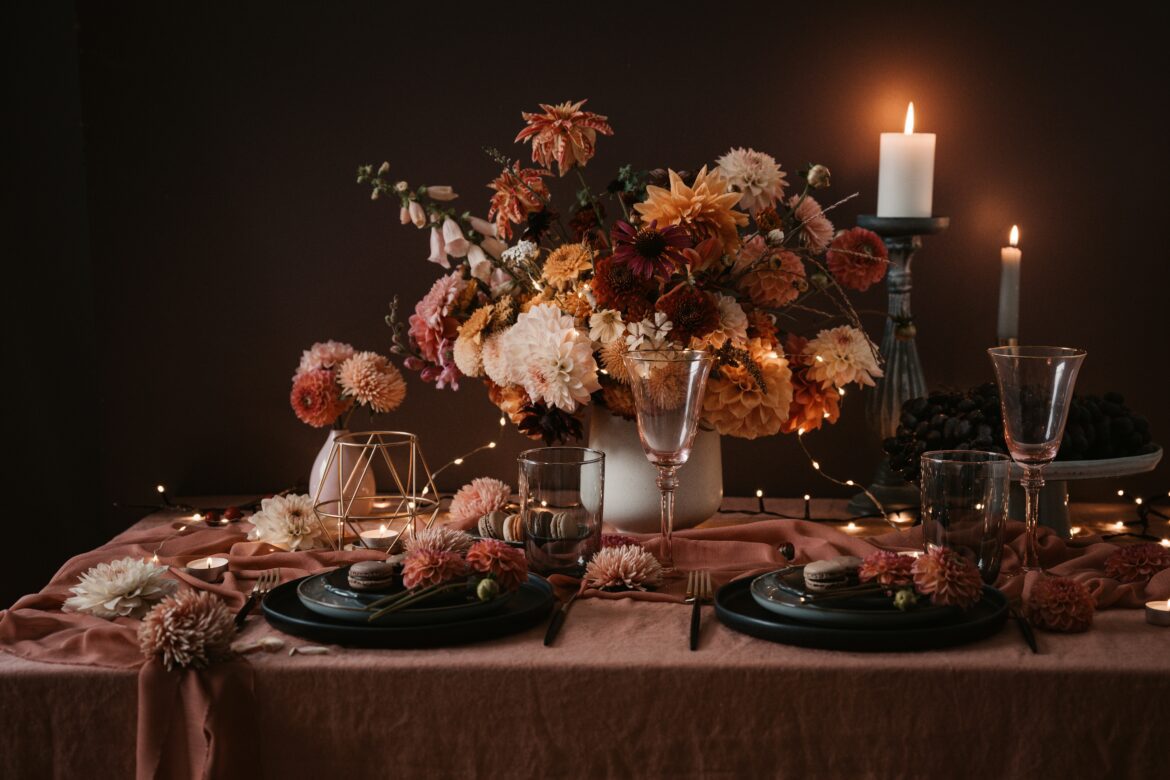Discover the surprising science behind why aesthetic videos of tablescaping and cosy routines feel so soothing – from mirror neurons to mental mini-breaks.
We’ve all been there. It’s half past nine on a Thursday evening, you’re scrolling through your phone after a long day, and suddenly you’re completely entranced by a video of someone arranging dried hydrangeas in a vintage milk jug. Twenty minutes later, you’ve watched them set an entire autumn tablescape, complete with hand-folded napkins and colour-coordinated candles. And somehow, inexplicably, you feel… better?
If this sounds familiar, you’re experiencing something rather wonderful that researchers are only just beginning to understand. Those aesthetic videos that flood our social media feeds aren’t just pretty distractions. They’re actually doing something quite remarkable to our overworked brains.
Your Brain Finds Beauty in the Predictable
According to processing fluency theory, our brains are naturally drawn to visuals that are easy to process. Symmetrical layouts, soft colour palettes, those satisfying moments when everything lines up just so – they all give our grey matter a little hit of pleasure. It’s not about being shallow or materialistic. We’re simply wired to find comfort in visual harmony.
Think about it. When you watch someone slowly pour cream into their morning coffee, creating those mesmerising swirls, your brain doesn’t have to work hard to make sense of what it’s seeing. Unlike the visual chaos of your email inbox or that cluttered kitchen counter you’ve been avoiding, these gentle, predictable movements feel like slipping into a warm bath.
Research published in psychology journals suggests that this ease of processing translates directly into positive emotions. Our brains essentially reward us for looking at things that don’t require much cognitive effort. In our overwhelmed world, that’s rather a gift, isn’t it?
The Art of the Two-Minute Mental Holiday
Here’s where these videos become particularly clever. They function as what researchers studying media consumption call “escapist entertainment” – but in perfectly portioned, guilt-free servings. Unlike binge-watching an entire series (we’ve all been there with that Sunday afternoon Bake Off marathon), a three-minute video of someone preparing afternoon tea provides just enough mental distance from whatever’s bothering you.
“Aesthetic videos featuring soft textures, muted tones, and slow, deliberate movements offer a calming effect that reduces mental clutter”
The gentle pacing is key. These creators aren’t rushing through their routines like some manic cooking show. They’re moving with deliberate slowness, allowing our nervous systems to downshift alongside them. Those soft-focus shots of someone buttering toast or arranging biscuits on a plate? They’re essentially visual meditation, whether we realise it or not.
Finding Comfort in Someone Else’s Rituals
There’s something profoundly soothing about watching someone else’s routine unfold. Perhaps it’s because our own mornings often involve frantically searching for matching socks whilst simultaneously trying to remember if we’ve fed the cat. But watching someone else calmly prepare their breakfast tray, everything in its proper place, offers us a glimpse of the order we crave.
Studies on routine and wellbeing consistently show that predictable patterns help reduce anxiety and provide emotional grounding. When we watch these videos, we’re borrowing someone else’s sense of structure, even if just for a moment. It’s like being invited to someone’s perfectly organised Sunday lunch without having to do any of the washing up.
The Phantom Touch of Visual Satisfaction
Now here’s where things get properly fascinating. Those “oddly satisfying” moments – watching someone smooth out a linen tablecloth or line up autumn leaves by size – might actually be triggering our mirror neurons. These specialised brain cells fire both when we perform an action and when we watch someone else do it.
Neuroscience research suggests this creates a sort of phantom sensory experience. You’re getting a whisper of the satisfaction of touching that soft fabric or creating that perfect arrangement, all from the comfort of your sofa. Your brain is essentially letting you feel the textures and movements without actually doing anything. Rather brilliant, really.
More Than Just Pretty Pictures
In our notification-filled, always-on world, these aesthetic videos have become something rather important. They’re not mere procrastination fodder (though we won’t judge if you’ve lost half an hour to tablescaping videos when you should’ve been doing the ironing). They’re actually serving a vital psychological function.
By providing these little pockets of visual calm and order, they help our overworked brains find moments of genuine rest. It’s a form of self-care that doesn’t require expensive equipment or a gym membership. Just you, your phone, and someone arranging peonies in slow motion.
So the next time you find yourself hypnotised by someone setting up their autumn table with military precision, don’t feel guilty. Your brain is simply taking a well-deserved breather. In a world that seems to spin faster every day, these gentle moments remind us that sometimes the best thing we can do is slow down and watch someone else fold napkins into perfect little swans.
After all, if a two-minute video of someone making the perfect cup of tea can make us feel a bit more human, who are we to argue with that?



